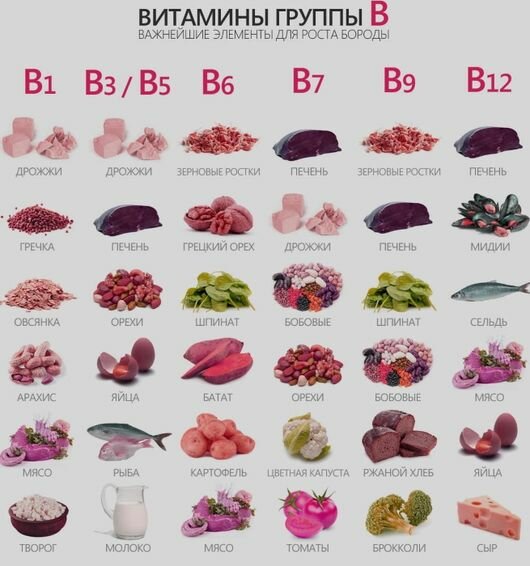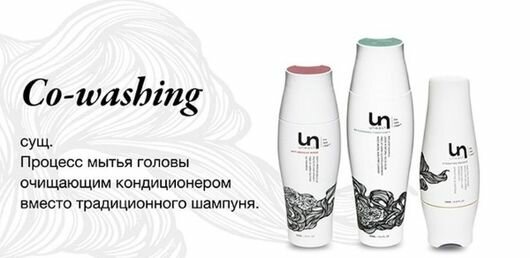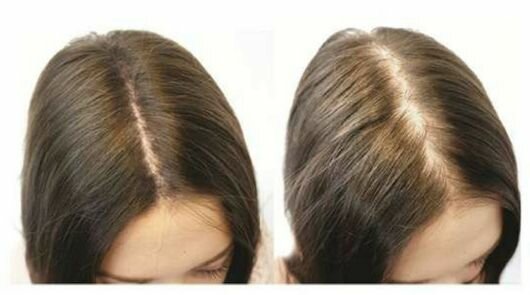Every third woman changes her image with hair dye. The usual dye with ammonia causes irreparable harm to the hair, so manufacturers have introduced non-ammonia paints that have a gentle effect. To choose a product that is suitable for a specific type of hair, it is worth analyzing the entire market of ammonia-free paints.
- The difference between ammonia and non-ammonia paint
- Pluses of ammonia-free paint
- Cons of paint without ammonia
- Types of hair colors without ammonia
- Names and characteristics of professional ammonia-free paints
- Ammonia-free hair color palette
- Toning and tinting ammonia-free paints: features, popular brands
- Rating of popular coloring agents: Loreal, Faberlic, Estelle, Matrix, Sies and others
- How to dye your hair with ammonia-free paint
- Step-by-step instruction
- Recommendations for painting with ammonia-free paint
- The average cost of conventional and professional paints
- Customer reviews on the safety and effectiveness of paints without ammonia
- Video: ammonia-free hair dyes
The difference between ammonia and non-ammonia paint
In ammonia hair dye, the coloring pigment is already applied to a bleached natural color. This is due to the fact that the main components that make up the composition are hydrogen peroxide and ammonia, which eliminates the original color of the hair. 

Ammonia opens flakes, and hydrogen peroxide removes natural pigments deep in the hair. Over time, the artificial dye is washed away, and voids appear in the hairs, because of which they become thin and brittle.
Paint without ammonia works only on the surface, without delving into the structure of the hair.
In dyeing, the coloring pigment is simply superimposed on the native color, covering each hair with a thin film. With the advent of new technologies, dye manufacturers reduced the size of the molecules of the chemical composition of the products, and found a new component that is softer than ammonia reveals the scales of the hair.
Pluses of ammonia-free paint
Advantages of paints without ammonia:
-
Gentle staining. The scales do not open so sharply due to the lack of ammonia, the outer coat of hair is practically not injured. The intrinsic color does not fade, due to the reduced number of hydrogen peroxide molecules, and the coloring pigment does not fall into the deep layer.


- Hair restoration. Manufacturers of dyes without ammonia not only reduced the number of harmful molecules, but also added useful organic compounds to the composition. Thanks to added vitamins and extracts from millet, birch, walnut shell or grape seed, the hair will be thicker and stronger. They moisturize and become more resistant to ultraviolet rays. The work of the sebaceous glands in the scalp is normalized, hair follicles are nourished.
- Improving the natural shade. You can choose a paint to match your natural shade. After staining, the curls will become shiny and silky, and the color will be more saturated.
- Unlimited color correction . Achieving the desired color, dye your hair again, there will be no problem. After a one-time staining, the dye will be washed off after 1.5-2 months, and it will be possible to experiment with the shade again.
- Hypoallergenicity. Suitable for girls with sensitive scalp. The dye without ammonia does not burn and does not bake during staining, and the vitamin complexes introduced into the composition additionally look after problem skin.
Without the need for dyeing, hairdressers still do not recommend using dye, but use special products designed for hair care.
Cons of paint without ammonia
Disadvantages:
- Poor gray hair . The dye without ammonia does not penetrate deep into the hair; pronounced gray hair cannot be painted well. Colorists recommend using ammonia-free dyes at the initial stage of graying.
-
It is quickly washed off. The main disadvantage of ammonia-free paint is its unstable effect. With each shampoo, the shade is gradually washed off, and the color fades before the manufacturer indicated a 6-week period.


The main disadvantage of hair dye without ammonia is the unstable effect. - Poor lightens. Dark locks can be lightened only by 2-3 tones (the exception is professional products that brighten by 8 tones).
- They require the work of a professional . For best results, use the hand of a master, as the color may not be evenly distributed throughout the hair.
- Price. Paints without ammonia are 2-3 times more expensive than ammonia products. At the same time, you will have to pay not only for the product, but also for the services of a master colorist.



 Do not miss the most popular article in the rubric:
Do not miss the most popular article in the rubric: Fashionable hair colors this year. Photos and trends of hairdressing.
Types of hair colors without ammonia
Hair dye without ammonia is divided into several categories:
-
Professional. The use of such ammonia-free dyes implies knowledge of the intricacies of staining, as the master colorist independently selects the proportions of the tones. Professional products without ammonia are suitable for highlighting, coloring, painting gray hair.


- Sparing. The purpose of this product is recovery. It is used in coloring brittle, sensitive or damaged hair. The gentle paint practically does not contain an oxidizing agent and refreshes color well. Often used to tint the tips or to brighten individual strands.
- Tinting . The colors in the palette of such paints are close to natural tones. A significant difference is the lack of the effect of “regrown roots”; when washing off, the border between your own and the new color will not be as sharp as with other means.
- Hue. Does not radically change the original color, refreshes and saturates the native shade.
Names and characteristics of professional ammonia-free paints
Hair dyes without ammonia from a professional line:
- Kapous “Non Ammonia.” Produces the effect of laminating hair. It maximally moisturizes curls, due to the hyaluronic acid introduced into the composition. Restores and protects locks from external influences. The texture of the paint is creamy, easy to apply and easy to rinse.
-
Wella Color Charm Permanent Hair Colo r. The color line is relatively small. Dye is used mainly for dyeing fair hair. Saturates strands with useful substances and practically does not harm the structure.


- Londa Professional. Perfectly saturates curls with color, lasts a long time. He paints gray hair well. Well cares for hair due to the constituent fats and vitamins.
- Chi Ionic Permanent Shine. It is mainly used by masters for clarification or highlighting. The paint is almost harmless, well restores strands. Coloring pigments are based on natural ingredients. The composition also includes vitamin complexes and silk proteins.
-
Matrix After use, the hair does not lose saturation for a long time, the hair structure becomes smooth and silky. The maximum color is included in the palette, which enables the consumer to create a unique shade.


- Estel Sense De Luxe. This brand is found in almost every beauty salon. Tones are easily mixed, the strands are painted evenly and efficiently. Thanks to the organic substances that make up the hair, it moisturizes and regenerates well.
Ammonia-free hair color palette
Girls who want to use the most gentle paint can try these brands:
-
Garnier Color Naturals. The dye contains natural shea butter, avocado and olives. The dye well restores strands and moisturizes the scalp. The palette contains 37 shades, mainly blond and light brown groups, as well as chestnut gamma and causing black and purple colors.


- Garnier Olia. In the ranking of the most popular dyes without ammonia, it occupies a rather high place. The composition introduced more than 60% of natural oils that revitalize the strands and saturate them with the necessary moisture. The manufacturer introduced a large tube of balm into the set, which should be enough for several applications.
-
Londa Color Naturals. This paint takes into account the uniqueness of each natural shade, so extracts from chamomile, oak bark and pomegranate are introduced into it for each gamut of shades. Reflective particles are introduced into the composition, creating a light shine of the strands.


- Faberlic . Gentle paint without ammonia of this brand has the required number of natural colors in the palette. The components that make up the product ensure the resistance of curls to external damage and saturate them with the necessary vitamin complex.
Toning and tinting ammonia-free paints: features, popular brands
Ammonia-free paint manufacturers took care of those women who just want to emphasize the natural color and created tinting and tinting ammonia-free hair dyes. They are not so persistent, wash off for 3-8 times, but are safe and easy to paint at home.
These funds can be painted during pregnancy or during lactation.
Popular brands of tinting paints:
- L’Oreal Professionnel Diarichesse. Tinting paint in natural shades. Carefully dyes each hair. Washed off gradually, without leaving a sharp transition at the border of regrown hair.
- Wella Color Touch. Has the property of intense toning. Has a large gamut of shades. Gives the hair a rich and shiny appearance.


- Schwarzkopf Professional Igora Expert Mousse tinting mousse. Well suited for revitalizing the color or tinting the roots between applications of regular paint. It is conveniently put and economically spent.



 Do not miss the most popular article in the rubric:
Do not miss the most popular article in the rubric: Fashionable bob haircut for medium hair. Photo, front and rear view.
Rating of popular coloring agents: Loreal, Faberlic, Estelle, Matrix, Sies and others
When choosing a dyeing agent, it is worth considering and comparing the characteristics of ammonia-free paints of different brands.
| Mark | Benefits | disadvantages |
| L’Oreal Paris Casting Creme Gloss |
|
|
| Faberlic |
|
|
| Londa Professional Londacolor |
|
|
| Matrix Color Sync |
|
|
| Schwarzkopf Igora Vibrance |
|
|
| Vivasan sanotint |
|
|
| Estel sense de luxe |
|
|
| Wella color touch |
|
|
| Syoss oleo intense |
|
|
How to dye your hair with ammonia-free paint
Staining with ammonia-free paint differs from the usual procedure for painting curls. Hair must be washed and dried. It is permissible for the strands to be slightly moist. Paint will not give the desired effect on dirty strands, and time and effort can be wasted.
Step-by-step instruction
Indications for staining at home:
- Before staining, it is necessary to conduct an allergy test. To do this, 48 hours before use, apply the dye mixture to a 0’4 x 0’4 inch skin area on the inside of the elbow and hold for 45 minutes. If in the next two days no reactions are detected, you can safely dye.


- Before use, you need to wash your hair with an ordinary shampoo or deep cleansing hair product. After washing, you can distribute serum or balm through your hair. It is better to use the means of one brand to achieve the best result.


- While the hair will dry, you can prepare a coloring composition. You need to wear gloves and mix the oxidizing agent with the developer according to the instructions.


- Apply paint to dry or dried curls, dividing them into several parts. First you need to dye all the roots, and then distribute the coloring composition to all the hair.


- Soak the mixture for staining for the time specified in the instructions (from 30 to 45 minutes). The consequences of overexposure of the dye will be dry hair and peeling of the scalp, so you must follow the instructions.
- Rinse off the paint with hot water is not recommended. The optimum water temperature is 37,4 – 46,4°F. The coloring composition should be washed with shampoo, preferably with acid Ph. After that, you need to apply a balm for colored hair (included in the package).
- Drying colored strands is better in a natural way, without using a hair dryer.


In order not to experiment with your own hairdo and choose the right shade, it is best to contact a colorist who will select the right paint depending on the type and condition of the strands and color the curls correctly.
Recommendations for painting with ammonia-free paint
A hair dye without ammonia is not as harmful as a regular dye because of the low hydrogen peroxide content and the complete absence of ammonia. Still, it is not recommended to neglect the amount of dyeing, since the natural pigment is discolored and replaced with artificial, during which the chemical composition of the hair changes.
In order not to carry out frequent dyeing and cause minimal damage to the hair structure, experts recommend adhering to simple rules for the use of ammonia-free paints.
These are the following rules:
- Use the services of professionals who will select the right color and carry out the staining procedure technically correct.


- For dyeing at home, choose high-quality dyes, carefully study the instructions for use.
- Wash your hair only when necessary with special shampoos, using balms for colored curls.
- Use paint without ammonia no more than 1 time per month. For experiments, choose tinting and tinting ammonia-free dyes that can be used 1-2 times a week.
- Take into account the features of the selected color. For example, shades of red and red quickly fade, and if the selected color is far from natural, the borders of regrown roots will be visible.
The average cost of conventional and professional paints
When painting in the cabin, you will have to pay both for the work of the master and for the dye itself. The price in this case will depend on the selected salon. For example, in an economy hairdresser, the cost of a master’s services will be about $ 6,8, depending on the length of the hair and the complexity of the work, plus the price of the selected paint. In elite salons, the price will vary from $ 41 – $ 82. 

Dye without ammonia for hair from a professional series is more expensive, since the dye itself and the oxidizing agent have a separate cost. The price of a professional
dye is from $ 3 – $ 14. depending on the composition of the product and the country of manufacture. In addition, you will need to pay for the oxidizer in the of $ 2,72.
Regular ammonia-free paint, which is sold in all household chemical stores, is much cheaper. Here the price will be from $ 2 – $ 4. It is intended for unprofessional use, and you will not need to additionally purchase an oxidizing agent and a reducing agent after staining.



 Do not miss the most popular article in the rubric:
Do not miss the most popular article in the rubric: Fashionable bob cut for short hair. Photo, front and rear view.
Customer reviews on the safety and effectiveness of paints without ammonia
The opinions of girls who were painted with ammonia-free means are rather monotonous. The main advantages of such dyes, buyers highlight the excellent appearance of curls and the quality of hair after dyeing. Many women note that having tried ammonia-free paint, in the future they will only use it to maintain the health of curls.
Of the shortcomings, the bulk of consumers emit poor shading of gray hair and a fairly quick washout of color. However, the quality, radiance and brilliance of colored strands after using paints without ammonia can positively affect the opinion of the consumer.
When choosing a dye without ammonia, it is better to consult with specialists and make a choice in favor of a hair product that will ideally suit the consumer.
Video: ammonia-free hair dyes
Hair care. Paint without ammonia from Faberlic:
Estel Sense De Luxe ammonia-free hair dye palette:





